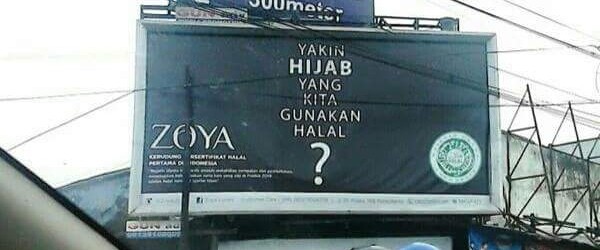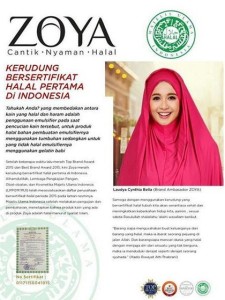This article was first published on Openseam. Iman Wong is a Chinese convert from Singapore. She enjoys reading, brisk walking and listening to oldies. She currently volunteers at Darul Arqam, where she counsels new converts and teaches them about Islam and prayers.
Fortunately, I met Brother Kamar Lim, whom I greatly respect, and also the late Sister Saibah – both of whom became my mentors. They understood the conflict with my family and gave me a lot of support and encouragement. They said, keep praying and Allah will lighten your burden. I felt so much better after talking to both of them. Brother Kamar Lim asked me to be a council member with Darul Arqam and in short, Darul Arqam became my second home.
After a year, my father started speaking to me. But, he told me that he wanted his future son–in-law to be a Chinese. I was astounded but I had no choice but to take up his challenge! As it turned out, in the same year, I attended a youth camp in Taipei organised by the World Assembly Muslim Youth (WAMY) with another Muslim sister. I was really excited to meet so many Chinese Muslims in Taiwan and, guess what, there I also met my late husband. My late father was so happy that I was marrying a Chinese Muslim and we were blessed with a son, alhamdulillah.
In 1998, my late husband met with a car accident. I realised that death is inevitable. That took me to further understand that life in this world is not forever and that one day, we have to return to God whether we are ready to or not. My faith fluctuated when I lost my late husband but it was a trial that I had to quickly get over for the sake of my only son. I renewed my faith and occupied myself with classes and activities at Darul Arqam. Just like the Chinese saying, ji lai zhi ze an shi. Be content wherever you find yourself.
Time flies. I have embraced Islam for 38 years. Thank God that He blesses me till today. I am imperfect, I still have weakness and flaws in my journey to Islam but my faith keeps me going. New converts? Put your trust in Allah and everything will fall in its place, insha’allah.
By Iman Wong
It started way back in 1978. I had decided to embraced Islam. It was indeed a very trying and difficult period for me but I survived.
I lived in a kampong area in Geylang and there was a mosque near my home. Every morning I could hear the sounds of adhan I disliked it because it was noisy and interrupted my sleep. I had many different neighbours: Malays, Indians and Chinese. We played and ran around together. All our homes were always open and we only locked our front doors after midnight. It was so safe and so sound...
Then, I was studying in a Roman Catholic school, where all of us went to church, sang hymns and also studied catechism. The British nuns would read from the Bible and tell us stories even though we were non-Catholics. Incidentally, I remembered a handsome British priest who visited our class -- all of us were mesmerised by his big blue eyes. I was not keen or interested in being a Catholic as I did not feel anything when I looked at a statue of Jesus Christ.
My parents were Taoists and they only worshipped ancestors. I was a free thinker and I simply followed what they wanted me to do, like holding joss sticks and cleaning the altar of my late grandfather. Sometimes, I followed my mother to the temple to pray to deities, but I really disliked it. The smoke from the joss sticks and the solemn looks on the deities made me feel very uneasy whenever I visited the temple. For me, worshipping deities are definitely out, because deities are all made by men.
Then, I was aware that there was a God but I did not know how to get to Him. I was like a lost ship floating on the sea.
My dearest father was hardworking but a man of very few words. He was the only breadwinner in my family and when he was stressed out, he drowned his sorrows by drinking! I did not understand him too well as there was no communication between us at all. He was like our ‘commander’ from whom we only took orders. Then, I was rather rebellious, always wanting to do something different from my siblings.
One night, I did some soul searching and wondered if life should be so monotonous – eat, sleep, work, play? I started thinking about the meaning of life and concluded that there must be some superpower that created everything. My head kept pounding.
Who is He and where is He?
Finally, one day my question was answered. A Malay Muslim neighbour gave me a English translation of the Qur’an, written by Mohammed Pickthall. When I finally found some time to take a look, I read the first verse, Al Fatiha. The phrase, "Show us the straight path" (1:5) attracted me. I felt that this was the wake-up call for which I had been searching.
I began to attend classes at Darul Arqam under the late Cikgu Zaini, at Pheng Geck Avenue. He gave me the impression of a father, a respected teacher, and a knowledgeable person. He had a good sense of humour and in other words, a jolly good fellow. And he looked so Chinese too! My first question to him was, “Are you a Chinese?” and he said "No, I look Chinese but I am born Malay."
Of course, my parents didn’t know that I was attending Islamic courses. How would they have reacted! When I decided to convert in 1978, my father was so mad at me and did not speak to me for a year, but my mother was very supportive, alhamdulillah. My eldest sister was strongly against it because she is a Catholic. I embraced Islam without their blessings and I did feel very upset.
I lived in a kampong area in Geylang and there was a mosque near my home. Every morning I could hear the sounds of adhan I disliked it because it was noisy and interrupted my sleep. I had many different neighbours: Malays, Indians and Chinese. We played and ran around together. All our homes were always open and we only locked our front doors after midnight. It was so safe and so sound...
Then, I was studying in a Roman Catholic school, where all of us went to church, sang hymns and also studied catechism. The British nuns would read from the Bible and tell us stories even though we were non-Catholics. Incidentally, I remembered a handsome British priest who visited our class -- all of us were mesmerised by his big blue eyes. I was not keen or interested in being a Catholic as I did not feel anything when I looked at a statue of Jesus Christ.
My parents were Taoists and they only worshipped ancestors. I was a free thinker and I simply followed what they wanted me to do, like holding joss sticks and cleaning the altar of my late grandfather. Sometimes, I followed my mother to the temple to pray to deities, but I really disliked it. The smoke from the joss sticks and the solemn looks on the deities made me feel very uneasy whenever I visited the temple. For me, worshipping deities are definitely out, because deities are all made by men.
Then, I was aware that there was a God but I did not know how to get to Him. I was like a lost ship floating on the sea.
My dearest father was hardworking but a man of very few words. He was the only breadwinner in my family and when he was stressed out, he drowned his sorrows by drinking! I did not understand him too well as there was no communication between us at all. He was like our ‘commander’ from whom we only took orders. Then, I was rather rebellious, always wanting to do something different from my siblings.
One night, I did some soul searching and wondered if life should be so monotonous – eat, sleep, work, play? I started thinking about the meaning of life and concluded that there must be some superpower that created everything. My head kept pounding.
Who is He and where is He?
Finally, one day my question was answered. A Malay Muslim neighbour gave me a English translation of the Qur’an, written by Mohammed Pickthall. When I finally found some time to take a look, I read the first verse, Al Fatiha. The phrase, "Show us the straight path" (1:5) attracted me. I felt that this was the wake-up call for which I had been searching.
I began to attend classes at Darul Arqam under the late Cikgu Zaini, at Pheng Geck Avenue. He gave me the impression of a father, a respected teacher, and a knowledgeable person. He had a good sense of humour and in other words, a jolly good fellow. And he looked so Chinese too! My first question to him was, “Are you a Chinese?” and he said "No, I look Chinese but I am born Malay."
Of course, my parents didn’t know that I was attending Islamic courses. How would they have reacted! When I decided to convert in 1978, my father was so mad at me and did not speak to me for a year, but my mother was very supportive, alhamdulillah. My eldest sister was strongly against it because she is a Catholic. I embraced Islam without their blessings and I did feel very upset.
My faith fluctuated when I lost my late husband
After a year, my father started speaking to me. But, he told me that he wanted his future son–in-law to be a Chinese. I was astounded but I had no choice but to take up his challenge! As it turned out, in the same year, I attended a youth camp in Taipei organised by the World Assembly Muslim Youth (WAMY) with another Muslim sister. I was really excited to meet so many Chinese Muslims in Taiwan and, guess what, there I also met my late husband. My late father was so happy that I was marrying a Chinese Muslim and we were blessed with a son, alhamdulillah.
In 1998, my late husband met with a car accident. I realised that death is inevitable. That took me to further understand that life in this world is not forever and that one day, we have to return to God whether we are ready to or not. My faith fluctuated when I lost my late husband but it was a trial that I had to quickly get over for the sake of my only son. I renewed my faith and occupied myself with classes and activities at Darul Arqam. Just like the Chinese saying, ji lai zhi ze an shi. Be content wherever you find yourself.
Time flies. I have embraced Islam for 38 years. Thank God that He blesses me till today. I am imperfect, I still have weakness and flaws in my journey to Islam but my faith keeps me going. New converts? Put your trust in Allah and everything will fall in its place, insha’allah.

























